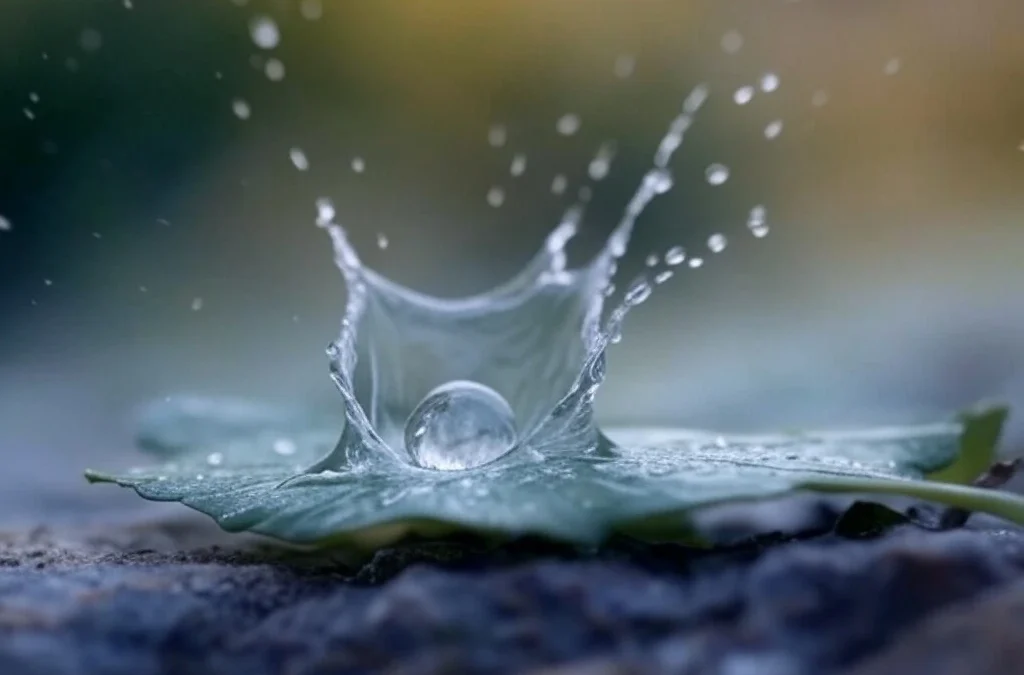Have you ever felt a rush of relief after a good cry or a sense of calm after a long run? These moments are examples of catharsis, a process where we release pent-up emotions, leading to a feeling of renewal and clarity. Catharsis can happen in many ways, and it’s something we all experience, sometimes without even realizing it. Whether you’re venting to a friend, laughing until your sides hurt, or even enjoying a sad movie, these activities can help clear emotional blockages and improve your mental well-being.
In this article, we’ll explore 20 different examples of catharsis that you might recognize from your own life. Some might surprise you, while others are familiar and comforting. Understanding these moments can help us appreciate the value of emotional release and how it contributes to our overall health. So, grab a cup of tea and settle in as we take a closer look at the ways catharsis can manifest in our daily routines. It’s a fascinating journey through the simple yet profound ways we find emotional balance.
Understanding Catharsis
Catharsis is a term that originates from the Greek word “katharsis,” meaning “cleansing” or “purification.” In modern usage, catharsis refers to the process of releasing, and thereby providing relief from, strong or repressed emotions. This concept is often associated with the arts, particularly drama and literature, where characters undergo emotional purging, leading to renewal and restoration. However, catharsis extends beyond the scope of art and is applicable in psychology and everyday life.
In psychological terms, catharsis is the experience of expressing and processing deep-seated emotions, often resulting in a sense of emotional release or liberation. This process can occur through various means, such as talking about one’s feelings, engaging in creative activities, or experiencing a significant event that prompts emotional expression. The idea is that by confronting and expressing these emotions, individuals can achieve a sense of emotional balance and well-being.
Catharsis plays a crucial role in therapeutic settings, where it is used as a technique to help individuals deal with emotional distress. Therapists may encourage clients to explore and express their emotions to facilitate healing and personal growth. In this context, catharsis can lead to insights and understanding that contribute to resolving internal conflicts and improving mental health.
The Best Examples of Catharsis
Catharsis is the process of releasing strong or repressed emotions. It is often experienced as a feeling of relief or emotional purification. Here are twenty examples of catharsis in different contexts:
1. Crying After a Sad Movie
Watching a particularly emotional film can stir up deep feelings. When the credits roll, tears may flow, offering a release from the tension built up during the movie. This emotional release can leave viewers feeling lighter, having processed emotions they might not have addressed otherwise.
2. Writing in a Journal
Pouring thoughts and feelings onto paper can be cathartic. Journaling allows individuals to articulate their emotions, helping them understand and cope with their experiences. This practice often provides clarity and relief, as it creates a safe space for self-reflection.
3. Screaming in a Safe Space
Sometimes, letting out a good scream can be incredibly freeing. Whether it’s into a pillow or in a secluded area, shouting can help release pent-up frustration or anger. This physical act of release can be surprisingly soothing, helping to calm the mind.
4. Talking to a Friend
Sharing burdens with a trusted friend can offer profound relief. Verbalizing worries or fears in a supportive environment can lighten the emotional load. This exchange often leads to a sense of being understood and less alone in one’s struggles.
5. Engaging in Creative Arts
Painting, drawing, or playing music can serve as powerful outlets for emotion. These creative activities allow individuals to express feelings that might be difficult to articulate with words. Channeling emotions into art can lead to a sense of accomplishment and emotional release.
6. Physical Exercise
A good workout can do wonders for emotional well-being. Physical activity releases endorphins, which are natural mood lifters. Whether it’s running, dancing, or cycling, exercise provides a constructive way to release stress and tension.
7. Meditation and Mindfulness
Practicing mindfulness or meditation helps individuals focus on the present moment. This practice can lead to a release of anxiety or lingering emotional baggage. Thanks to fostering a sense of calm and acceptance, meditation can provide a powerful cathartic experience.
8. Attending a Support Group
Support groups offer a space for individuals to share their experiences with others who understand. This shared experience can be immensely cathartic, as participants feel heard and validated. The collective support helps in processing emotions more effectively.
9. Reading a Relatable Book
Finding one’s own struggles mirrored in a book can be cathartic. Characters or stories that resonate can help readers process their own emotions. This connection often yields new insights and a comforting sense of shared experience.
10. Engaging in Rituals
Rituals, whether personal or cultural, can provide a structured way to process emotions. From lighting a candle to participating in a ceremony, these acts can symbolize letting go or moving forward. Rituals offer a sense of closure and renewal, which can be deeply cathartic.
11. Dancing Freely
Letting loose on the dance floor, or even in the privacy of one’s home, can be a profound act of catharsis. The rhythm and movement allow the body to express emotions that words often cannot. As the music takes over, the dancer may feel a release of tension and a wave of joy or relief.
12. Laughing with Abandon
Laughter truly is the best medicine. A hearty, unrestrained laugh among friends or while watching a comedy can melt away stress and improve mood. The act of laughing releases endorphins, creating a natural high and a feeling of emotional cleansing.
13. Gardening and Connecting with Nature
Tending to a garden or simply spending time in nature can provide a deep sense of peace and catharsis. The simple acts of planting seeds or pruning plants can be meditative and grounding. Nature’s beauty and tranquility offer a space to release worries and rejuvenate the spirit.
14. Participating in a Protest or March
Joining others in a protest or march for a cause one deeply cares about can be incredibly cathartic. The collective energy, shared purpose, and vocal expression of beliefs help release pent-up emotions related to social injustices. It provides a sense of empowerment and solidarity.
15. Engaging in a Spiritual Practice
For many, engaging in spiritual practices such as prayer or attending a religious service can provide a profound release. These practices often involve introspection and connection with something greater than oneself, offering comfort and emotional relief.
16. Decluttering and Organizing
The act of decluttering one’s living space can lead to emotional clarity. Sorting through belongings and letting go of unnecessary items often mirrors an internal process of letting go of emotional baggage. The resulting order and simplicity can bring a refreshing sense of peace.
17. Painting a Room or Redecorating
Changing one’s environment by painting or redecorating a space can be a form of catharsis. The physical act of transformation reflects an internal desire for change and renewal. The fresh surroundings can invigorate and provide a new perspective.
18. Volunteering for a Cause
Helping others through volunteer work can be a rewarding way to release personal stress and gain a sense of purpose. The act of giving back and making a difference fosters empathy and gratitude, which can be deeply healing.
19. Listening to Emotional Music
Music has the power to touch the deepest parts of the soul. Listening to songs that resonate emotionally can help process and release feelings. Whether it’s a moving symphony or a powerful ballad, music can lead to tears, smiles, or contemplation, all of which are cathartic.
20. Engaging in a Heartfelt Conversation
Having a deep, meaningful conversation with someone who truly listens can be incredibly liberating. Sharing one’s thoughts and feelings openly allows for emotional release and validation. This connection can foster understanding and healing, leaving both parties feeling lighter.
Additional examples of catharsis:
- Cleaning with Purpose
Scrubbing floors, washing dishes, or tidying up intensely can clear both physical and mental clutter. The sense of accomplishment afterward often mirrors a release of emotional burdens. - Tearing Up Old Letters or Photos
Destroying items tied to painful memories can symbolize moving on. The physical act helps to sever emotional ties, leaving room for healing and growth. - Releasing Balloons with Messages
Writing messages of forgiveness or hope on balloons and letting them float away can be a symbolic and cathartic ritual for letting go of pain or negativity. - Shredding Paper
Tearing or shredding paper filled with worries, fears, or anger written on it is a physical way to release pent-up emotions. The process can bring immediate relief. - Participating in a Physical Challenge
Completing an obstacle course, marathon, or intense hike can push emotional and physical limits. The accomplishment often brings a wave of relief and pride. - Smashing Objects in a Safe Environment
In controlled spaces like rage rooms, breaking plates or smashing items can help release deep-seated frustration or anger in a physically safe manner. - Immersing in a Hot Bath
Soaking in warm water with candles or soothing music can relax both the body and mind. It creates a moment of calm where emotions can surface and release. - Storytelling to a Group
Sharing a personal story in a supportive setting, like a storytelling event, can provide closure and connection. The act of being heard can be deeply liberating. - Singing at the Top of Your Lungs
Belting out a favorite song, whether alone or in a karaoke session, lets emotions pour out. The music and expression can lift spirits and release tension. - Breaking Free from Routine
Taking a spontaneous road trip or doing something completely out of the ordinary can offer a fresh perspective. The break disrupts emotional stagnation, bringing a sense of renewal. - Throwing Stones into Water
Casting stones into a lake or river while reflecting on emotional burdens can symbolize letting go. The ripples created mirror the release of inner turmoil. - Writing a Letter You Don’t Send
Composing a letter to someone who hurt or disappointed you allows feelings to flow freely. The act of expressing raw emotions on paper can bring peace, even if the letter remains unsent.
Emotional Release Through Art
Art has long been a powerful medium for expressing and processing emotions. Whether it’s painting, sculpture, music, or dance, the creative process allows individuals to channel their feelings into something tangible and meaningful. This act of creation can serve as a profound emotional release, providing a sense of relief and clarity.
When people engage in artistic activities, they often find themselves in a state of flow, where their worries and stressors fade into the background. This focus on the present moment can be incredibly therapeutic. For some, the act of painting or drawing can help clarify emotions that were previously confusing or overwhelming. Others might find that writing poetry or composing music allows them to articulate feelings they couldn’t express in words.
Art also provides a safe space to explore difficult emotions. It can be easier to confront sadness, anger, or grief when these feelings are externalized in a painting or song. This externalization can lead to a better understanding of one’s emotional landscape and promote healing.
Moreover, sharing art with others can create a sense of connection and empathy. When people see or hear something that resonates with their own experiences, it can validate their feelings and foster a sense of community. This shared experience can be incredibly powerful, reminding individuals that they are not alone in their emotions.
In essence, art is not just about creating something beautiful; it’s about finding a way to express and understand the complexities of human emotion. Whether you’re an artist or someone who appreciates art, engaging with creativity can be a deeply enriching experience that supports emotional well-being.
The Role of Catharsis in Ancient Greek Drama
Catharsis is a concept deeply rooted in ancient Greek drama, particularly in the works of playwrights like Sophocles and Euripides. This term refers to the emotional release experienced by the audience through the unfolding of a dramatic narrative, especially in tragedies. Aristotle, in his seminal work “Poetics,” described catharsis as the purification and purgation of emotions, specifically pity and fear. The function of catharsis was to provide the audience with a safe space to confront intense emotions, leading to an emotional cleansing or renewal.
In the context of Greek theater, catharsis was not merely an emotional experience but also a moral one. The tragedies depicted characters who faced profound dilemmas and consequences, often due to their flaws or fate. As the audience engaged with these stories, they experienced a range of emotions that culminated in catharsis, allowing them to reflect on their own lives and moral choices. This process was considered essential for personal growth and understanding human nature. By presenting stories that resonated with universal themes, Greek tragedies served as a mirror to society, prompting audiences to consider the complexities of life and the human condition.
Psychological Benefits of Catharsis in Therapy
Catharsis plays a significant role in psychological therapy. Many therapists use cathartic techniques to help clients release pent-up emotions. This process can lead to a sense of relief and clarity. By expressing deep-seated feelings, individuals often gain insight into their behaviors and thought patterns. This can be particularly useful for those dealing with trauma or anxiety.
In therapy, catharsis isn’t just about emotional release. It’s also about understanding and processing these emotions. When clients articulate their feelings, they’re often better able to address them. This can lead to personal growth and healing. It’s like cleaning out a cluttered attic. It might be uncomfortable at first, but ultimately, it creates space for new, healthier experiences.
Some might worry about the intensity of cathartic experiences. It’s true that confronting deep emotions can be challenging. However, with the guidance of a trained therapist, this process is typically safe and beneficial. The controlled environment of therapy allows for a supportive exploration of emotions. This can be a powerful step toward improved mental health.
Art as a Medium for Cathartic Expression
Art provides a unique platform for cathartic expression. Many people turn to creative outlets to process emotions. Painting, writing, music, and dance all offer ways to express feelings that might be difficult to verbalize. This form of catharsis can be deeply personal and transformative.
For artists, the act of creating can serve as a release. It allows them to channel complex emotions into something tangible. This process can be therapeutic, providing a sense of accomplishment and understanding. Even those who don’t consider themselves artists can benefit from creative expression. Engaging in art can be a way to explore and release emotions in a safe space.
Art also allows for connection with others. Sharing creative work can help individuals feel understood and validated. This can be especially important for those who feel isolated in their experiences. Art has the power to communicate emotions that words alone cannot. It’s a reminder that we’re not alone in our struggles.
Incorporating art into daily life can enhance emotional well-being. Whether it’s through creating or appreciating art, the cathartic benefits are significant. For some, it might be drawing or playing an instrument. For others, it might be simply listening to a favorite song. Whatever the form, art remains a powerful tool for emotional release and healing.
Read also: Determinism: 30 Examples & Definiton
The Most Popular on BitGlint

100 Things That Are Short
Not everything in life is big or long-lasting. Some things are small. Some things pass quickly. People notice short...

50 Intellectual Challenge Examples
Intellectual challenges serve as excellent tools for mental stimulation, cognitive development, and continuous...

30 Loyalty Examples & Meaning
Loyalty is something people talk about often, but not everyone understands what it really means. It shows up in quiet...

30 Transgression Examples & Definition
We all know what it feels like when someone “crosses the line.” Maybe they say something they shouldn't. Maybe they...

30 Defiance Examples & Meaning
Defiance is something most people experience at some point in life. You feel it when you say no to something that...

100 Social Interaction Examples
In our increasingly digital world, the art of face-to-face social interaction remains essential for personal growth,...

30 Conformity Examples & Definition
Conformity affects how we speak, think, dress, and even how we make choices — often without us realizing it. It shows...
Get Inspired with BitGlint
The Latest
List of 100 Empty Things in Life, Space, and Words
In our overcrowded world, emptiness can feel like a rare commodity—yet it surrounds us in unexpected ways. This collection explores the physical, emotional, and metaphorical emptiness we encounter throughout our lives. From the haunting silence of abandoned spaces to...

100+ Folklore Examples, Types, and Meanings
Folklore connects people through shared stories, beliefs, and traditions. In this article, you will find over 100 folklore examples from every corner of the globe, explained to help you understand their meaning and cultural importance. What Is Folklore? Folklore is...
100 Open-Ended Questions: Examples & Meaning
Open-ended questions are questions that invite explanation, opinion, or personal stories. Unlike yes-or-no questions, they don’t limit the answer. Instead, they encourage people to think, reflect, and express themselves more freely. If you’ve ever wanted to have...
30 Fascinating Fate Examples from History & Real Life
Have you ever wondered why certain events in life seem too perfect to be just a coincidence? Like bumping into an old friend in a faraway city or meeting someone who changes your life in unexpected ways. These moments often make us pause and think about the mysterious...

